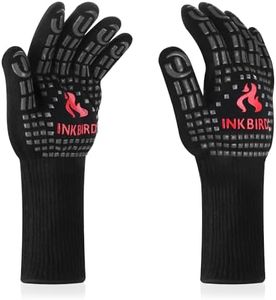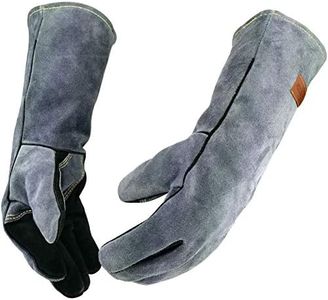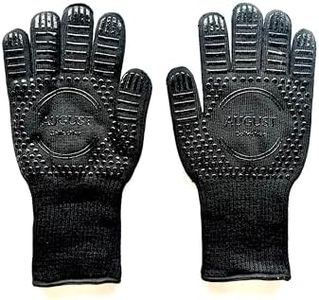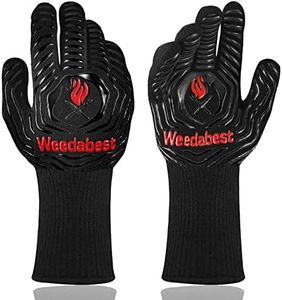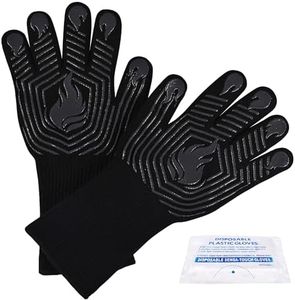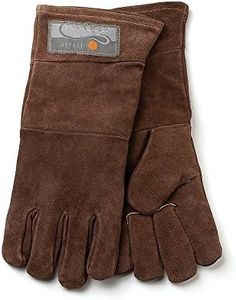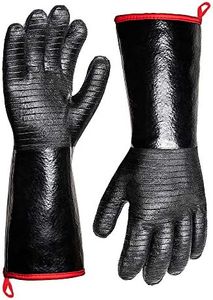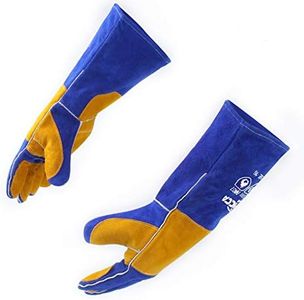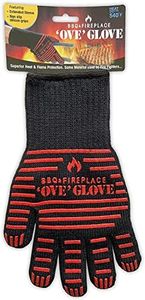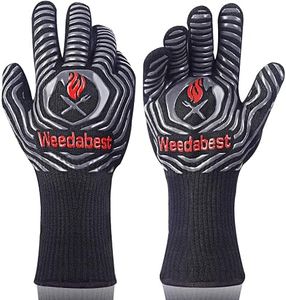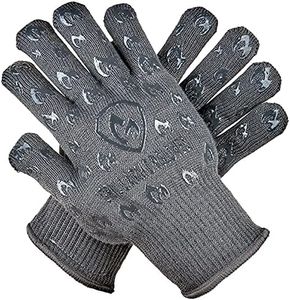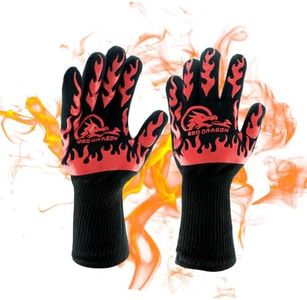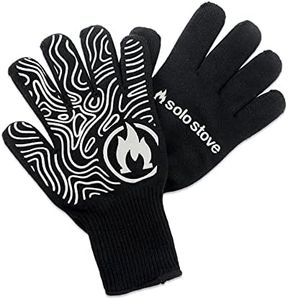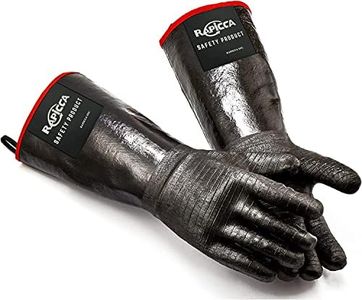We Use CookiesWe use cookies to enhance the security, performance,
functionality and for analytical and promotional activities. By continuing to browse this site you
are agreeing to our privacy policy
10 Best Grill Gloves
From leading brands and best sellers available on the web.Buying Guide for the Best Grill Gloves
When picking grill gloves, the main goal is to protect your hands from heat, flames, and potential food spills while grilling or handling hot cookware. The right pair not only shields you from burns but also gives you enough grip and flexibility to handle grill tools and food with confidence. Understanding the key features of grill gloves will help you decide which pair fits your cooking habits and preferences.Heat ResistanceHeat resistance refers to how well the gloves can protect your hands from high temperatures. It's an essential spec because grilling involves direct exposure to flames, hot grates, and cookware. Gloves are usually rated by the maximum temperature they can withstand, which might range from around 400°F to well over 900°F. Lower heat resistance works for light kitchen use, while grilling or BBQ needs gloves that can handle very high heat. Choose a glove based on the type of grilling you do; if you regularly barbecue over high flames or handle cast iron, opt for gloves with the highest temperature rating.
MaterialThe material of grill gloves determines their heat resistance, comfort, grip, and durability. Common materials include silicone, aramid fibers (like those in firefighter gear), leather, and cotton with heat-resistant coatings. Silicone gloves are waterproof and offer good grip but may sometimes be bulky. Aramid gloves provide high heat protection and flexibility. Leather offers classic protection and durability, especially for open-flame grilling, but may not be as flexible or easy to clean. Cotton blends are comfortable but best for lighter tasks. Consider what feels better on your hands and matches your cooking needs.
Dexterity & FitDexterity is how easily you can move your fingers and grip objects while wearing the gloves. This matters because good control helps you avoid accidents and handle food or tools confidently. Some gloves are thick and stiff for maximum protection, while others are thinner and more flexible for better finger movement. If you often handle small tools or delicate food, look for gloves that are snug and flexible. If you prioritize protection over fine control, thicker gloves are suitable.
Length & CoverageGlove length determines how far up your wrist or arm the glove extends, offering more or less protection from heat and splatters. Short gloves just cover the hand, while longer ones reach past the wrist or mid-forearm. If you grill over open flames or use large smokers where reaching deep inside is required, a longer glove gives you extra safety. For fast grilling where your hands stay mostly outside the heated area, a standard short glove may suffice.
Grip & TextureGrip is about how well you can hold tools, pans, or food without slipping. Many gloves have textured surfaces, such as raised silicone patterns or rough leather, to help prevent drops. This is important for safety and ease of use, especially when handling greasy or heavy items. If you often move cast iron pans or slippery trays, prioritize gloves with strong, non-slip textures.
Cleaning & MaintenanceCleaning refers to how easy it is to wash and care for your gloves after use. Some materials, like silicone, can go in the dishwasher or be quickly wiped clean; others, like leather, require more careful cleaning and need to be kept dry. If you value convenience, choose gloves that are machine washable or easy to rinse off. For occasional use, more high-maintenance materials might be acceptable.
